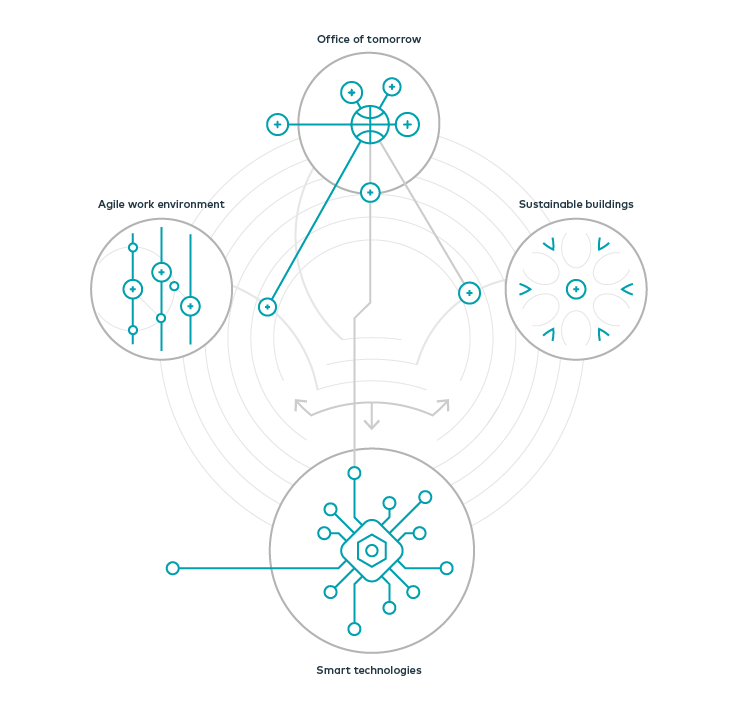
Article
Predictive maintenance evolves
The COVID-19 pandemic has caused a radical shift in the way we work, and now, in how its influence has reshaped the design and function of the workplace too. Many companies are transforming their offices to help employees feel safer as they return to in-person work. This includes improving air circulation systems, accommodating physical distancing by removing desks and creating more open spaces to support the health and wellbeing of employees.
As we continue to navigate the effects of the pandemic there is one absolute –the one-size-fits-all office solutions are obsolete. Three key trends driving the priorities of office occupiers include creating agile spaces, designing offices that improve employee wellbeing and harnessing new technologies to optimise building efficiency.
Office spaces needs to be adaptable to respond to changing needs, whether it’s a pandemic, a new way of working, or a new technology. Agile workplaces provide greater flexibility, allowing employees to choose how and where they work to best serve their needs at the time. They also drive stronger collaboration, boost productivity and reduce real estate costs. A recent report revealed 36% of employees would choose agile working over a pay raise.
Green buildings are designed to increase energy, water and materials efficiency, as well as reduce harmful impacts on the environment across the entire lifecycle of a structure, from design and construction to operations, maintenance and demolition.
Sustainable buildings can also improve employees’ physical and mental health. Studies show that people who work in green buildings have higher levels of perceived wellbeing compared to those working in buildings that are not ecofriendly. The happiness levels of employees were also found to be 23% higher if the building they were working in had natural lighting and biophilic attributes that connect workers to nature. This is especially critical given that an increasing number of employees have stated they were struggling with mental health challenges due to the pandemic. A survey by the Centers for Disease Control and Prevention found that 40.9% of the 5,470 respondents reported experiencing a mental or behavioral health condition associated with the outbreak of the virus, such as depression or anxiety.
A wide variety of green building certification programs exist around the world, and these certifications help building owners and project managers set clear goals and metrics early in the design phase of a facility to achieve and prioritise sustainability and wellness goals. At Wood, we partner with our clients to develop sustainable and energy efficient buildings that achieve LEED Silver, Gold and Platinum certification for various structures across the globe.
Technology will also play a vital role in helping companies navigate an effective return-to-work strategy.
The pandemic has underscored that what happens within the four walls of a building is no longer just about how systems are functioning, but rather how those systems affect people in the building.
Today’s building owners are using smart technology to make facilities more efficient and provide a safer and healthier environment. This includes apps to industrial hygiene like managing employee movement throughout offices and track most frequently used spaces, reservation systems to relocate meetings to larger team spaces as needed and indoor air sensors to measure air quality.
Overall, employers must be flexible and forward-thinking to best meet the needs of employees, today and in the future. With office designs that focus on agile workplaces, current technologies and green buildings, employers can form a more sustainable, livable and resilient work environment.
For more information on the workplace of tomorrow, check out our informative podcast where Wood experts reimagine the role of the office and offer insights into creating a comfortable and safe workplace in a post pandemic world. How is the purpose of the office changing and what role does technology play in driving a resilient future? How are organisations incorporating green and well-being concepts into workplace design?
